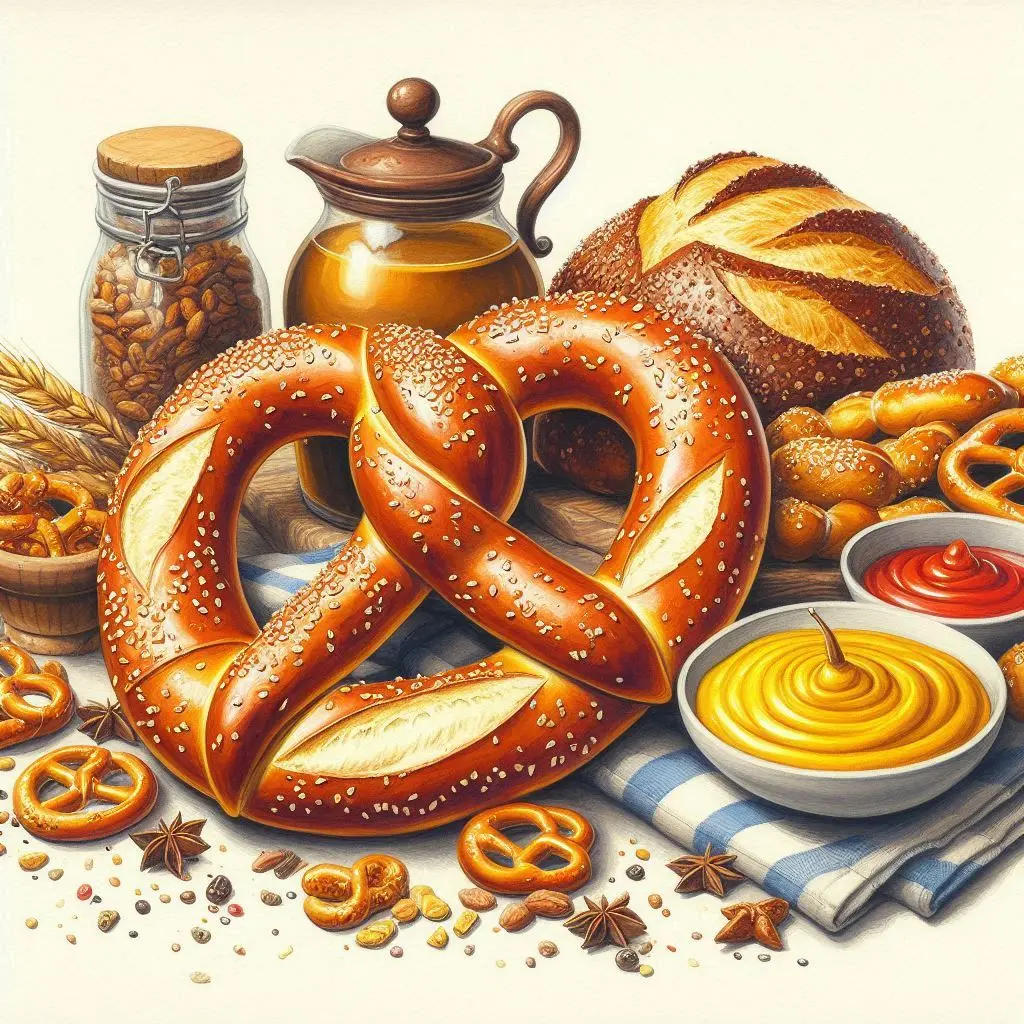I bought 175 g pack of salami which had 162 g of salami as well.
On our packaging (Germany) we have a little “e” meaning it will be ± the weight with a deviation of 1.5-9% depending on the volume.
https://www.payback.de/ratgeber/besser-leben/kleines-e-auf-verpackungYeah pretty sure these are European rules as we have the same thing in the UK. Basically the current batch needs to remain above the average weight if it drops under the target weight packs will start getting rejected until the average increases.
Idk about batch weight.
Might be true. Sounds at least reasonable.Yeah I’ve worked IT in a food production environment and am familiar with setting up the products. When we went from catch weight (price per kg) to fixed weight products like ops we got loads of calls about packs being rejected and initially didn’t understand why until reading more into how e weighing rules work. I can’t remember the specifics as it was sometime ago but only a certain percentage can be below the target weight and above T1 and a smaller percentage can be between T1 and T2 which are the fall back weights.
https://www.gov.uk/weights-measures-and-packaging-the-law/packaged-goods
Fortunately these rules are preprogrammed into checker weighers and weight price labellers so they setup is easy it’s just getting the weights right going into those machines with minimum giveaway (if the batch weighs more than the the pack count x target weight that is called giveaway).
Could be worth checking your scale, if everything seems to be underweight. Low battery can show as lower result on some scales
Fun fact: a US nickel weighs 5.000g, and 5 US quarters weigh 1.0000oz
From the mint yes, dont try this with a circulated coin though lol
Woah- intentionally?
If so, that’s amazing. What a clever idea
I need to start using old batteries in my bathroom scale.
I use no batteries and am very happy with what it displays.
It’s called shrinkflation and it should be considered price gouging and be federally investigated.
Shrinkflation in supposed to be labeled.
Most likely this is an issue with the scale
Weigh another one with the package and see if it matches to what it says on the package. Use the produce weight scale at the store so you don’t have to buy two of them. I have a suspicion that you’re buying the package. But then if that’s the case then those meat moisture absorbers also will add a lot of weight when it comes to buying meat.
The FDA regulation on Net Weight is found in 21 CFR 101.105. In this regulation FDA makes allowance for reasonable variations caused by loss or gain of moisture during the course of good distribution practice or by unavoidable deviations in good manufacturing practice. FDA states that variations from the stated quantity of contents should not be unreasonably large.
While FDA does not provide a specific allowable tolerance for Net Weight, this matter could come under FTC jurisdiction. FTC has proposed regulations that would unify USDA and FDA Net Contents labeling and incorporate information found in the National Institute of Standards & Technology (NIST) Handbook 133.
NIST Handbook 133 specifies that the average net quantity of contents in a lot must at least equal the net quantity declared on the label. Plus or minus deviation is permitted when caused by unavoidable variation in weighing and measuring that occur in good manufacturing practice. The maximum allowable variance for a package with a net weight declaration of 5 oz is 5/16 oz. Packages under-filled by more than this amount are considered non-compliant.
The maximum allowable variance for a package with a net weight declaration of 5 oz is 5/16 oz.
oddly, that’s just over 8g, the difference noted in OP’s example. so, OP’s package is within he allowable tolerance, just.
5/16 oz out of 5 oz is just over 6%.
Thank you! I don’t get why they use such weird measurements. Why not use %?
And it would probably be more expensive to get precision-calibrated equipment to get you at the bottom end of the tolerance to save product cost than what it would cost to just aim for the correct value with less precise equipment.
This one is a conspiracy theory I struggle to get behind. It seems like the conspiracy would be less profitable than the “proper” behavior here.
You know full well that they did some statistical analysis and determined the minimum possible amount of pasta that they could try to put in that box, taking into account variations in their machinery and moisture content.
Big “How much can a banana cost, $10?” energy here.
We’re talking about one of the cheapest brands of commodity pasta here. Think about how much effort you are implying the company put into this versus what 8g of major wholesale flour costs – the only cost they’d really be saving in this conspiracy.
Even at consumer retail prices that’s, what, $0.012 per box? And I bet wholesale prices are at least an order of magnitude less than that. Is the maybe tenth of a percent of cost savings worth a potential class action lawsuit and the horrific pain of Discovery that comes with it? And does that maybe tenth a percent of cost savings even come close to covering all the additional production costs involved in having that machinery calibrated so much more precisely? The juice is not worth the squeeze, my friend.
You think you’re arguing that they would do evil for profit’s sake, but you’re actually arguing they would do evil for evil’s sake even at the expense of profit.
Just so that I’m understanding correctly, you’re saying a company that sells tens of billions of dollars of pasta per year is not interested in saving a penny ot a fraction of a penny per box?
Do you think anyone is going to win a class action lawsuit against a pasta company that 1-5% of the time puts just barely too little pasta in the box. You think we’re going to have that kind of righteous justice? Haha. Do you think people would even be that surprised given that, as you say, “we’re talking about one of the cheapest brands of commodity pasta here.” No, if this was found to be true, whatever regulatory agency would just give them a warning.
It’s not about being evil, is about the way capitalism works. If they’re putting more product in the box than they have to, they’re fools.
And you don’t “precisely calibrate the machinery.” You just figure out what the variations are and you set it to the minimum. If you’re supposed to have something like 9-11 oz of pasta in your box and you know that your machine will give you whatever you set it to, +/- 0.2 oz of pasta, 99% of the time, you set your machine to 9.2 or 9.3 oz. You don’t set it to 10 oz.
4.7 billion is Barillas global revenue, that’s a lot for one person but for a multi-continent good distributor it’s not.
I know you’re angry at the worlds injustices and all but I don’t think the bargain brand dry pasta company is the source of a part of your global conspiracy
I’m not angry and I don’t think this is a global conspiracy. I just believe that large companies are motivated to cut costs wherever they can.
Have you heard of pink slime? Its a product of the beef industry. They heat and centrifuge “waste trimmings” to get a little bit of additional gooey fatty animal product and then add it to ground beef. It’s pretty gross and it adds only a miniscule amount to the profit margin.
Large companies do everything they can to make as much money as possible.
Hanlon’s razor: Never attribute to malice that which is adequately explained by stupidity or incompetence.
5/16 oz
How many football fields to the gallon is that? On a serious note this is something far better expressed as a fraction than an amount of difference for one specific container size…
You can’t divide 5/16 by 5?
1/80th?
1/16th
It’s not really clear whether the variance scales linearly with weight. We only know 1 data point. It could be bracketed for different weight groups.
5/80
Easy 😎
6.25%
In the nineties, 4oz ground pepper cans made on a line I worked on.
The tolerances were horrible.
McCormick was 3.9 I think
Black and white can 3.5. !!! (25%)
Yes both were made on the same exact line
.5 is not 25% of 4
Why is the basic arithmetic in this thread so terrible?
TBH, I was hungover a piss, and was like fuck it.
Because it’s full of delusional angry people that think there’s a global conspiracy to short consumers tiny percentages of our food to keep us subjugated and poor
The FDA is probably not operating in what I can only assume is Canada from the Eng/Fra and grams usage.
But I’m sure they have something to allow for fluctuations in weight, would rather it be mandated as a minimum allowing for a bit of extra weight to over compensate however.
A lot of American stuff has English French and Spanish so it can cover the whole continent basically
Yeah, but here in Canada you don’t get Spanish very often, and it would be where the English and French would be. Also the Americans would put both units on the package.
Do Americans set their scales to metric?
USDA contractor here, we use metric on the scales we use day to day.
I do as well - just because I live in a backwards country doesn’t mean I have to be backwards too
I do.
Packaging machines are getting more accurate, but producers just use that to stretch the legal limits instead of improving their honesty.
I don’t see anything on the scale indicating it was not tared. Nor do I know whether or not you took a noodle or two out of the pile before weighing
For all we know, you tared this +20g and this is feel-good anti-corporate propaganda. Which is fine, we all hate the corporations…but propaganda is propaganda.
Op, please post a video showing a calibration weight on the scale followed immediately by your pasta taken directly out of a sealed box. For science.
Your sound logic side, 8g of pasta is hardly shrinkflation and I wouldn’t be surprised if it’s an accepted rounding error in plant packaging.
shrinkflation is 410 instead of 500 grams, then there is this weight skew
Also net weight vs gross weight. I think there’s a law that regulates this where I live (France) because it’s always specified but I don’t see it here.
I assume OP is from Canada because I see English and French on the packaging. I lived there for a few years and was losing my mind over this kind of stuff the entire time. Prices never include taxes even though you basically always have to pay them, price per pound/gallon/unit is never displayed either and they really try to swindle you with this, I constantly saw “family sized” or whatever packages that actually cost more per pound than the regular version when I did the math. So I’m not surprised.
I weighed wet cat food packets and they’re supposed to be 85g net weight but it’s gross weight. Kind of convenient, isn’t it.
I’m starting to see some drinks and packages of food even have calories varied. For example, I’ll buy a monster java drink of the irish blend flavor. One can will be 190 and another can will be 180. They’ll both have the same nutrients.
We are seriously now beginning to slip in keeping this shit consistent and it worries me.
Oh boy, you better not look into how much caffeine and vitamins are allowed to vary if you are worried about calories (it’s a lot).
How do we know your scale is right?
Also just as plausible that there’s still some broken noodle crumbs and fragments stuck in the bottom flaps of the box.
While it’s hard to prove that it’s been done correctly a lot of scales do come with calibration weights.
A lot of kitchen scales are also just crap.
My drug scale is my kitchen scale is my drug scale
You can also weigh water, 100ml weighs 100 grams
But how do you know that your measurement of 100mL of water is accurate?
Just weigh it, duh.
Just use a scale and measure 100g of water
DONT FORGET TO SUBTRACT THE WEIGHT OF THE BEAKER
Huh? Well how do we know that any scale at all is right?
Pretty sure that every modern scale has a “tare” button that resets the weight and zeroes everything out.
That is only single point calibration. You want more than that in case the transfer function is non-linear. Ideally at least two for the extremes of range.
Basically imagine if y does not equal x, say y = x -0.01*x + b. Your tare is going to adjust b such that at x = 0 you get y equals 0. That doesn’t fix x is equal to 900. At 900 you would get 891.
Generally speaking for weight you have differential or integral non-linearity. You fix both by multiple calibration points. Which leads to the range transition problem but whatever. No excuse anymore with FPGAs.
Yeah, but if it measures every 1 gram at 0.98 gram, it will display less in the end
Taring isn’t the same as calibration. Every scale should have instructions on its tolerance (± x grams) and a calibration weight. You’ll have to buy the calibration weight separately.
Well how do we know that any scale at all is right?
My lab has weights that get calibrated against a NIST standard annually. We use those weights to perform daily quality control that our scale is accurate (to +/- 0.01g). If the quality control fails then we recalibrate the scale.
Sup, I’m your local friendly USDA contractor who very much uses scales everyday. Consumer grade kitchen scales are terrible and will lie to you. The fact that it does not go out to the tenths or hundredths is a big flag for accuracy.
We check test our scales twice a year to make sure they are accurate. I once tried check testing my kitchen scale I use for canning for giggles and it failed miserably. It would only register weight on 2 out of 4 quadrants until I got to 10g or so. I’m sure my ohaus is going to show a different and more accurate result if I where to try it.
Well, it can’t be packaged to scientific standards, it has to be packaged to ours.
Scale accuracy was never a problem or scrutinized until ow, and successfully helped people lose weight, so it’s not the accuracy of the scales that is an issue.
This is blatant consumer fraud and nothing in your field can change that fact, clearly.
This just doesn’t make sense.
You wouldn’t say the same when talking about other products. If you buy ibuprofen for example you wouldn’t say “it can’t be packaged to scientific standards, it has to be packaged to ours” if you try to weigh a single pill with your kitchen scale.
Stuff HAS to be packaged to scientific standards. Period.
If your tools at home aren’t accurate enough or simply aren’t properly calibrated for a specific job, it can’t be the fault of the producer.
If you use a 2€ kitchen scale that is 10 years old you can’t blame the producer if your measurement is off by 10%.
The producer cannot make sure YOUR equipment is proper for the task, and they can’t make sure EVERYONES scales see the exact same. So of course they have to weigh with their own scales and surprise surprise they use extremely precise scales that are properly calibrated and tested regularly.
If you read his comments to my comments he states that following “their” (?) standards, the producers have to put much more product in order to “”““adjust””“” for the tolerance error of random consumers. Clueless.
Your comment doesn’t make sense, since home tools are not precise enough and that is not the manufacter fault. I suggest you read about Metrology
That is scientific standards for him, not “their” standards or whatever. Yeah clueless.
I think you’re a bit off track. scale accuracy has been a subject of careful scrutiny for millenia. You absolutely have to use the right tool for the job. A kitchen scale is not the right tool for the job. It would be like complaining that you can’t take your car’s lug nuts off with a pipe wrench.
What!?
Scales used for commercial purposes, such as weighing the amount of product in a package, are regularly calibrated and checked. Messing with the calibration is considered an economic crime and comes with very harsh penalties.
I remember being in school 20 years ago and being taught about scale inaccuracies and the importance of frequent calibration. The thing about weight loss is that you will lose weight if you’re in a deficit. Your daily calorie needs are going to fluctuate a little bit, regardless. Most people don’t keep activity the exact same, sleep the exact same, take exactly the same steps everyday, plus hormones fluctuate, etc. Your measurements don’t have to be precise, just close enough. People have also lost weight with sloppy volumetric measurements, counting out chips, or even eyeballing the amount of space taken up on their plate. MyPlate.gov was rolled out after consumer research found that it works.
Eight grams off? That seems rather significant. I mean we use to buy 20 grams of weed we’d know if it was almost half shy.
8g sure but this is only within 2% error. most scales would probably be within 3% so this isn’t surprising
You would presumably use a higher precision scale for that purpose. I know my kitchen has a large scale that’s only 1 g precision but can go up to 8 kg, and one that’s .01g precision but only goes up to 500g.
Well you were high so we can’t be sure about those numbers
I wasnt at the time but twenty minutes later, sure
Unless you were using a certified scale and checking it with certified check weights every time you used it, you were just guessing and hoping your dealer wasn’t randomly or purposely off. And density of the material weighed matters also. Weed is far less dense than pasta so a discrepancy can be more noticeable since it takes a larger volume of weed to reach a particular weight than pasta does.
Understand that a digital kitchen scale is made with the cheapest load sensors a manufacturer is willing to pay for. Nor do they come with any kind of traceable certification as to accuracy class. In fact you get no guarantee that your shiny new kitchen scale is fit for even that purpose - just that it turns on, lights up, and displays something when you place a load upon it.
Accuracy is a cruel and VERY expensive mistress to chase. And most people don’t understand it anyway.
that’s why you don’t use a scale that’s only accurate to the full gram (and barely that) when dealing with something where the cost is such that a missing half gram actually makes a difference.
Now, I agree with you that if you believe a home kitchen scale is telling the truth, you are a fool. But as an old toolmaker who dabbled in accuracy for a living, displayed digits does not equal accuracy nor even repeatability. And there can be a fair amount of interpretation involved in analog beam scales.
I think it’s just another PPS, (piss poor scale), scale that is neither accurate nor repeatable. And the packaging material weights are rarely included in listed weights. Since packaging can change at any time due to costs.
please actually do it. Not for any real Reason but just because it’s funny to use professional equipment to weigh Pasta
Let’s all stick up for the corporate shills… it’s the Lemming way!!!
Right, like I love how he’s showing something falsely advertised, and these idiots are like, “no, it was the OTHER thing that was falsely advertised that’s the problem!”, like it can’t possibly be TWO shitty products.
It’s a 2% difference. The cutting and packaging is done (most probably) by machines. I have clinically diagnosed OCD, and I wouldn’t care about 8g of missing pasta… How much do you leave on the plate/in the pot/throw away? :)
Otoh, hitting exactly 410g (assuming the scale is calibrated, and you have the same temperature, air moisture and altitude as the factory), is very difficult. They could adjust their machines so the variation hangs a bit more towards the customer, but for them, 2% x millions of boxes = profit.
Most of our packaging machines require < 1%, target <0.5% variance (both ways). Honestly in practice, over a whole batch the total variance is extremely tiny.
Add to this story the accuracy of a household, not-calibrated scale? Yeah I’d say this seems OK.
What do you make?
Tolerances for food items depend a lot on item size, shape, and irregularity.
I mean… that’s a good point. I only make bulk materials, like 1 ton supersaks, and we tend to OVERfill so customers don’t complain, with the target still being close to zero for a whole batch.
That seems around what I’d expect the measurement error to be anyway
This really isn’t a big deal, the customer paid 2% less off this specific box. Oh.
This isn’t a big deal, the customer paid 2% less at checkout and only had to say “me shorting this transaction is just a statistical probability and you should view it as the cost of doing business with me.” Oh.
This isn’t a big deal, the customer gets massive subsidies from the government while the poor manufacturers have to pay stupid worker safety fees and unfair payroll during times of extreme economic ‘fortune’. Oh.
2% off isn’t that bad.
Sure.
I just wonder how often I will find a package that gives me a 2℅ gain. If it’s all fair and square, it should be fairly common. If not, either the scales need recalibration or… (insert sinister music)… there is intent here and that is another way to maximise profits; 2% at a time.
You know all those people who find 3 pop tarts in a bag instead of 2? There’s the other side.
I’ll take blatant consumer fraud for $500, Alex


















